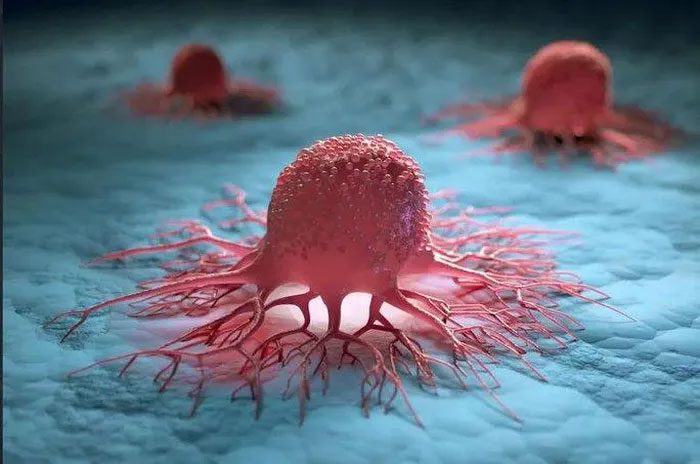Cambridge Scientists Discover Key Blockade with Potential to Revolutionize Cancer Treatment.
Research funded by the UK Cancer Research Organization and conducted by the UK Cancer Research Institute – Cambridge at the University of Cambridge has highlighted the crucial role of a protein named NALCN in cancer.
Studying the bodies of laboratory mice, the researchers identified that NALCN is a critical blockade in the metastasis mechanism, not just in cancer.

Cancer Cells – (Image courtesy of SCITECH DAILY)
According to a paper published in the scientific journal Nature Genetics, the research revealed a surprising fact: Metastasis is not an “exclusive privilege” of cancer!
Healthy cells in disease-free bodies still exploit this mechanism to move to other organs, exchange resources, and proliferate. For example, healthy pancreatic cells can migrate to the kidneys and contribute to the formation of healthy kidney cells.
This process depends on NALCN, which acts as a gateway.
When a person has cancer, the diseased cells have taken advantage of this very normal mechanism to spread their lineage throughout the body, leading to cancer metastasis – which is the key reason why cancer becomes more dangerous, deadly, and difficult to treat.
According to SciTech Daily, this process was observed in mice that were made to develop cancer, highlighting the role of the NALCN protein.
Identifying NALCN is just the beginning; it has only located a target for attack but has not yet discovered a real method of attack. However, it is a crucial starting point, paving the way for more effective treatment methods to prevent cancer metastasis in the future.
Professor Richard Gillbertson, Director of the UK Cancer Research Institute – Cambridge, emphasized: “These findings are among the most significant to emerge from our laboratory in three decades. We have not only identified one of the elusive drivers of metastasis but also provided new insights that are often overlooked.”
Professor Gillbertson affirmed that if this is further explored, it could have profound implications for how we prevent cancer from spreading to organs, as well as how we can utilize this mechanism to repair damaged organs.


















































